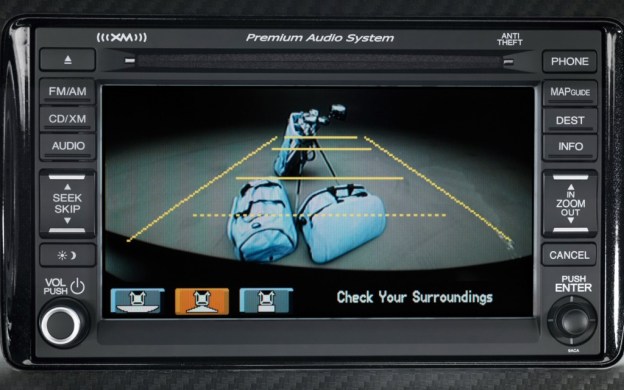 While all eyes were on the “fiscal cliff” negotiations, another organ of the federal government was doing a little procrastination of its own. Just a couple of weeks ago, Transportation Secretary Ray LaHood said we wanted a bill mandating rearview cameras in all new cars ready to go by December 31. The National Highway Traffic Safety Administration (NHTSA) and the White House missed the deadline.
While all eyes were on the “fiscal cliff” negotiations, another organ of the federal government was doing a little procrastination of its own. Just a couple of weeks ago, Transportation Secretary Ray LaHood said we wanted a bill mandating rearview cameras in all new cars ready to go by December 31. The National Highway Traffic Safety Administration (NHTSA) and the White House missed the deadline.
The bill was supposed to finalize rules for the implementation of a rearview camera mandate. This is the fourth time the NHTSA has failed to meet one of its own deadlines on this matter since Congress approved the rearview camera proposal in 2007.
“The department remains committed to improving rearview visibility for the nation’s fleet and will issue a final rule upon completion of the regulatory review process,” an NHTSA statement reported by the Detroit News said.
The bill is currently in limbo; it is under review by the White House Office of Management and Budget, but no new deadline has been set.
Despite the delays, the NHTSA believes rearview cameras are the best way to prevent drivers from hitting pedestrians and obstacles while backing up.
The NHTSA said that about 100 children age five or younger die in “backover” accidents annually. A previous report stated that 300 total fatalities occurred annually, along with 16,000 injuries.
The agency said rearview cameras could prevent between 95 and 112 fatalities per year, and between 7,072 and 8,374 injuries.
Cameras would also increase a new car’s MSRP. According to the NHTSA, they would add between $58 and $88 to the cost of a new car with a car with a display screen, and between $159 and $203 to a car without a display screen.
The NHTSA calculates that the rearview camera proposal would cost between $11.8 million and $19.7 million per life saved.
A previous study by the Alliance of Automobile Manufacturers put the cost of implementing rearview camera legislation at $11 million, compared to $9.8 million for roof strength regulations and less than $4 million for side impact regulations.


